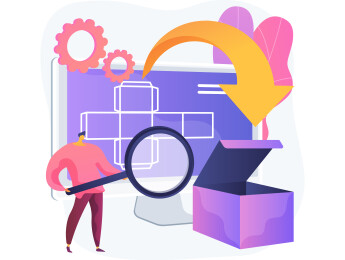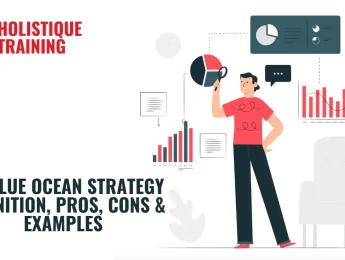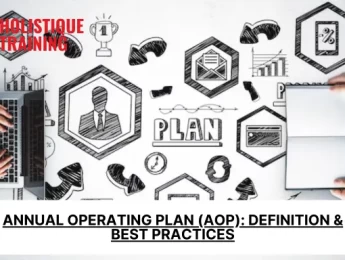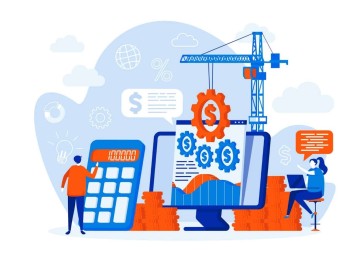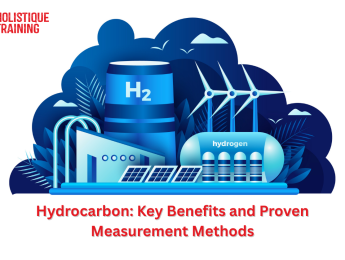Introduction
Training Needs Analysis (TNA) is a fundamental process that empowers organizations to optimize their human capital and enhance overall performance. By systematically assessing the gap between current employee competencies and organizational requirements, TNA identifies specific training needs critical for achieving strategic objectives. This article explores the purpose, methods, and impact of TNA within organizations, highlighting how TNA results are translated into actionable plans that drive employee development and organizational success. Understanding the importance of TNA in aligning training efforts with business goals is key to fostering a skilled workforce capable of adapting to evolving challenges and driving continuous improvement. Let's delve deeper into the world of Training Needs Analysis and its transformative role in organizational development.
What is Training Needs Analysis (TNA)?
Training Needs Analysis (TNA) is a systematic process used by organizations to identify the gaps between current employee skills or competencies and the skills required for successful job performance. TNA is a critical step in strategic human resource management aimed at improving employee performance, productivity, and overall organizational effectiveness.
In essence, TNA involves assessing the training needs of employees or specific groups within the organization to determine what knowledge, skills, abilities, and attitudes they need to perform their jobs effectively. This analysis helps organizations make informed decisions about training and development initiatives by identifying areas where training interventions are most needed.
The process typically involves various steps, including gathering data through surveys, interviews, observations, and performance evaluations. The collected information is then analyzed to prioritize training needs based on criticality and urgency. The ultimate goal of TNA is to align training efforts with organizational objectives and ensure that employees have the necessary skills and knowledge to contribute effectively to the organization's success.
How Does TNA Benefit Organizational Development?
Training Needs Analysis (TNA) plays a pivotal role in fostering organizational development by addressing key aspects of employee performance, skill enhancement, and strategic alignment. The benefits of TNA for organizational development are multifaceted and contribute significantly to the overall success and growth of the organization. Here's an in-depth look at how TNA benefits organizational development:
- Identifies Skill Gaps and Training Needs:TNA helps organizations identify specific areas where employees lack essential skills or competencies required to perform their roles effectively. By pinpointing skill gaps through systematic analysis, TNA enables targeted training interventions that can bridge these gaps, leading to improved performance and productivity.
- Aligns Training with Organizational Goals:Effective TNA ensures that training initiatives are closely aligned with organizational objectives and strategies. By understanding the skills and knowledge needed to support organizational goals, TNA helps in designing training programs that directly contribute to achieving desired outcomes and business success.
- Enhances Employee Performance and Satisfaction: When employees receive training tailored to their needs identified through TNA, they become more proficient in their roles. Improved skills and competencies lead to enhanced job performance, increased confidence, and greater job satisfaction among employees. This, in turn, boosts overall morale and engagement within the workforce.
- Boosts Organizational Competitiveness:TNA enables organizations to stay competitive by continually developing the skills and knowledge of their workforce. By addressing evolving industry trends and technological advancements through targeted training, organizations can adapt more swiftly to changes and maintain a competitive edge in the marketplace.
- Optimizes Resource Allocation: TNA helps in optimizing resource allocation by directing training investments towards areas that offer the highest returns in terms of performance improvement and business impact. By focusing resources on addressing critical skill gaps identified through TNA, organizations can maximize the effectiveness of their training budgets.
- Supports Succession Planning and Talent Development:Through TNA, organizations can identify high-potential employees and key talent gaps critical for succession planning. By proactively developing talent pipelines based on identified training needs, organizations can ensure a steady supply of skilled individuals ready to assume leadership roles in the future.
- Facilitates Continuous Improvement: TNA is not a one-time activity but an ongoing process that promotes continuous improvement within the organization. By regularly assessing training needs and evaluating the effectiveness of training programs, organizations can adapt and refine their development strategies to meet evolving business requirements and industry standards.
- Enhances Organizational Agility and Adaptability:TNA fosters a culture of learning and adaptation within the organization. By investing in the development of employees' skills and competencies through TNA-driven training initiatives, organizations become more agile and adaptable in responding to market changes and business challenges.
Training Needs Analysis (TNA) is a cornerstone of organizational development, enabling organizations to optimize their human capital, align training efforts with strategic objectives, and drive continuous improvement and innovation. By investing in TNA, organizations can cultivate a skilled and motivated workforce capable of achieving long-term success and sustained growth in a dynamic business environment.
What Approaches and Techniques are Used in TNA?
Training Needs Analysis (TNA) utilizes a variety of approaches and techniques to gather, analyze, and interpret data about the training needs of individuals, teams, or the entire organization. These approaches aim to provide a comprehensive understanding of current skill levels, performance gaps, and learning requirements necessary to support organizational goals. Here are several key approaches and techniques commonly used in TNA:
Job Analysis:
- Task Analysis: This involves breaking down job roles into specific tasks and identifying the knowledge, skills, and abilities (KSAs) required to perform each task effectively. Task analysis helps in understanding the specific competencies needed for job success.
- Competency Mapping: By mapping job roles to desired competencies, organizations can assess which competencies are lacking across different roles and departments. This helps in identifying training needs focused on developing critical competencies.
Surveys and Questionnaires:
- Employee Surveys: Surveys are used to collect feedback directly from employees about their perceived training needs, challenges, and areas for improvement. Survey responses provide quantitative data that can inform training priorities.
- Training Needs Assessment Questionnaires: These structured questionnaires are designed to gather specific information about employees' skills, knowledge levels, and training preferences. They help in identifying individual and collective training needs within the organization.
Interviews and Focus Groups:
- Structured Interviews: Conducting one-on-one interviews with employees, supervisors, and key stakeholders allows for in-depth exploration of training needs and challenges. Structured interviews provide qualitative insights into specific skill gaps and training requirements.
- Focus Groups: Group discussions involving selected employees from different departments can uncover shared training needs and facilitate brainstorming on potential solutions. Focus groups encourage collaboration and generate diverse perspectives on training requirements.
Performance Appraisals and Feedback:
- Performance Reviews: Analyzing performance appraisal data helps in identifying areas where employees are underperforming or lacking specific skills. Performance reviews provide valuable insights into individual training needs.
- 360-Degree Feedback: Gathering feedback from multiple sources (peers, supervisors, subordinates) through a 360-degree feedback process can reveal comprehensive information about an employee's strengths and weaknesses, informing targeted training interventions.
Observations and Work Sampling:
- Direct Observation: Observing employees in their work environment helps in assessing actual job performance and identifying areas for improvement. Direct observation provides first hand insights into training needs related to task execution and work practices.
- Work Sampling: Analyzing samples of work outputs or tasks performed by employees helps in understanding the frequency and quality of specific job activities, highlighting training needs related to efficiency and effectiveness.
Data Analysis and Metrics:
- Skills Inventories: Maintaining comprehensive databases of employee skills and qualifications allows for systematic analysis of skill gaps across the organization.
- Performance Metrics: Analyzing key performance indicators(KPIs) related to productivity, quality, and customer satisfaction can reveal areas requiring skill enhancement through targeted training.
Benchmarking and Best Practices:
- Benchmarking: Comparing organizational performance against industry benchmarks and best practices can identify areas where additional training is needed to achieve competitive standards.
- Learning from Industry Trends: Staying abreast of industry trends and technological advancements helps in anticipating future training needs and preparing employees for upcoming challenges.
By employing these approaches and techniques, organizations can conduct a thorough Training Needs Analysis (TNA) that informs the development and implementation of effective training programs aimed at addressing identified skill gaps and enhancing overall organizational performance and competitiveness.
What Factors Influence Training Needs?
Several factors influence training needs within organizations, shaping the types of skills, knowledge, and competencies that employees require to perform their jobs effectively and contribute to organizational success. Understanding these influencing factors is crucial for conducting a comprehensive Training Needs Analysis (TNA) and designing targeted training interventions. Here are key factors that influence training needs:
Organizational Objectives and Strategy:
The strategic goals and priorities of the organization drive training needs. Training initiatives should align with organizational objectives to ensure that employees acquire skills that contribute directly to achieving desired outcomes.
Technological Advancements:
Rapid changes in technology impact job roles and skill requirements. Training needs arise when employees need to adapt to new software, tools, or systems to perform their tasks efficiently.
Industry Trends and Regulations:
External factors such as industry trends, market demands, and regulatory changes influence training needs. Organizations must keep pace with industry developments to remain competitive and compliant.
Job Roles and Responsibilities:
The nature of employees' job roles and responsibilities determines their specific training needs. Different roles require distinct skill sets, and training should be tailored accordingly.
Employee Skills and Competencies:
Existing skill levels and competencies of employees play a critical role in identifying training needs. Gaps between desired and actual competencies highlight areas where training is necessary.
Performance Gaps:
Performance evaluations and feedback reveal areas where employees are underperforming or facing challenges. Training needs are identified to address performance gaps and enhance productivity.
Employee Development and Career Pathways:
Training needs are influenced by employees' career aspirations and development goals. Providing relevant training opportunities fosters career growth and retention of talent.
Changes in Organizational Structure:
Organizational restructuring, mergers, or expansions can create new roles or alter job responsibilities, necessitating training to support workforce adaptability.
Customer Expectations and Service Quality:
Customer feedback and service quality standards highlight training needs related to enhancing customer-centric skills and delivering exceptional service.
Workplace Culture and Employee Engagement:
Training needs are influenced by the organization's culture and values. Investing in training that promotes employee engagement and satisfaction fosters a positive work environment.
Employee Turnover and Succession Planning:
Succession planning requires identifying and developing talent to fill future leadership roles. Training needs assessments to help in preparing employees for advancement.
Feedback from Stakeholders:
Input from supervisors, managers, clients, and other stakeholders provides valuable insights into training needs based on observed performance and business requirements.
Table 1:Factors Influencing Training Needs: Key Drivers for Effective Training Strategies
Factor | Description |
Organizational Objectives and Strategy | Aligning training needs with strategic goals ensures skills acquired contribute directly to desired outcomes. |
Technological Advancements | Evolving technology impacts job roles, requiring training to adapt efficiently to new software, tools, or systems. |
Industry Trends and Regulations | Keeping pace with industry trends and regulations influences training needs to remain competitive and compliant. |
Job Roles and Responsibilities | Different job roles demand specific skill sets, necessitating tailored training programs based on role requirements. |
Employee Skills and Competencies | Identifying gaps between desired and actual competencies highlights areas where training is necessary for skill enhancement. |
Performance Gaps | Addressing underperformance and challenges identified through evaluations and feedback guides training needs. |
Employee Development and Career Pathways | Providing relevant training supports employee career growth and retention, aligning with development aspirations. |
Changes in Organizational Structure | Restructuring or expansion can create new roles, requiring training to support workforce adaptability and efficiency. |
Customer Expectations and Service Quality | Training needs are shaped by customer feedback and service quality standards to enhance customer-centric skills. |
Workplace Culture and Employee Engagement | Investing in training that fosters engagement and satisfaction promotes a positive work environment and productivity. |
Employee Turnover and Succession Planning | Identifying talent for future leadership roles through succession planning influences training to prepare employees for advancement. |
Feedback from Stakeholders | Input from supervisors, managers, and clients provides valuable insights into training needs based on performance and business requirements. |
By considering these factors comprehensively during Training Needs Analysis (TNA), organizations can tailor training programs to address specific needs, enhance employee capabilities, and ultimately drive organizational growth and success. Regularly reassessing these factors ensures that training initiatives remain relevant and impactful in a dynamic business environment.
How to Overcome Barriers to Effective TNA?
Overcoming barriers to effective Training Needs Analysis (TNA) is essential to ensure that the process accurately identifies training gaps and informs strategic learning and development initiatives within organizations. Several strategies can be employed to address common barriers and maximize the effectiveness of TNA:
Clear Communication and Stakeholder Engagement:
Foster open communication with key stakeholders, including executives, managers, HR personnel, and employees. Ensure that everyone understands the purpose and benefits of TNA. Engage stakeholders early in the process to gain buy-in and gather diverse perspectives on training needs.
Align TNA with Organizational Goals:
Link TNA directly to organizational objectives and strategic priorities. By demonstrating how TNA supports business goals, it becomes easier to secure resources and leadership support for training initiatives.
Use a Systematic and Structured Approach:
Adopt a structured methodology for conducting TNA, incorporating clear timelines, roles, and responsibilities. Define specific steps for data collection, analysis, and decision-making to maintain focus and accountability throughout the process.
Address Resource Constraints:
Allocate sufficient resources, including time, budget, and expertise, to conduct TNA effectively. Consider leveraging technology, outsourcing certain tasks, or collaborating with internal departments to optimize resource utilization.
Enhance Data Collection Methods:
Employ a variety of data collection techniques, such as surveys, interviews, observations, and performance assessments, to gather comprehensive and accurate information about training needs. Use validated tools and instruments to ensure data reliability and relevance.
Involve Employees in TNA Process:
Empower employees by involving them directly in the TNA process. Encourage participation in surveys, focus groups, and feedback sessions to capture their insights and perspectives on training requirements.
Address Resistance to Change:
Anticipate and address resistance to TNA by emphasizing the benefits of training and development for individual growth and career advancement. Communicate transparently about how TNA findings will be used to support employee development and organizational success.
Promote Continuous Improvement:
Foster a culture of continuous improvement by regularly evaluating and refining TNA methodologies based on feedback and lessons learned from previous assessments. Embrace flexibility and adaptability to accommodate evolving organizational needs.
Provide Training for TNA Practitioners:
Equip HR professionals and TNA practitioners with the necessary skills and knowledge to conduct effective TNA. Offer training on data analysis, survey design, interviewing techniques, and strategic planning to enhance TNA competencies.
Integrate TNA with Performance Management:
Integrate TNA findings withperformance management processes to establish clear links between training outcomes and employee performance. Use TNA data to inform individual development plans and performance improvement strategies.
Monitor and Evaluate TNA Impact:
Establish metrics and key performance indicators (KPIs) to measure the impact of TNA on employee performance, productivity, and organizational outcomes. Regularly assess the effectiveness of training interventions and adjust strategies accordingly.
By addressing these barriers proactively and implementing these strategies, organizations can overcome challenges associated with TNA and leverage its full potential to drive meaningful improvements in employee capabilities and organizational performance.
How are TNA Results Translated into Actionable Plans?
Translating Training Needs Analysis (TNA) results into actionable plans involves a strategic process of interpreting findings, prioritizing training interventions, and designing comprehensive development programs. The goal is to ensure that identified training needs are effectively addressed to enhance employee performance and contribute to organizational objectives. Here's how TNA results can be translated into actionable plans:
Data Analysis and Prioritization:
Start by analyzing TNA data collected from surveys, interviews, performance evaluations, and other sources. Identify key training needs and prioritize them based on urgency, impact on business objectives, and feasibility of implementation.
Setting Clear Objectives:
Define specific and measurable training objectives aligned with organizational goals. Clearly articulate what skills, knowledge, or competencies the training initiatives aim to develop or enhance.
Designing Targeted Training Programs:
Develop tailored training programs that directly address identified needs. Choose appropriate training methods, content, and delivery formats (e.g., workshops, seminars, e-learning modules) based on TNA findings and participant preferences.
Involving Stakeholders:
Engage stakeholders, including managers, supervisors, subject matter experts, and employees, in the planning process. Incorporate their insights and feedback to ensure that training plans reflect organizational priorities and address specific job requirements.
Allocating Resources:
Allocate necessary resources (e.g., budget, trainers, materials) to support the implementation of training plans. Ensure that resources are sufficient to deliver quality training experiences and meet learning objectives.
Developing Timelines and Milestones:
Create detailed timelines and milestones for implementing training activities. Define milestones for program development, delivery, participant evaluation, and post-training follow-up to track progress and ensure accountability.
Customizing Content and Delivery:
Tailor training content and delivery methods to meet the diverse learning needs of participants. Consider incorporating interactive elements, case studies, simulations, and practical exercises to enhance engagement and knowledge retention.
Implementing Evaluation Measures:
Integrate evaluation measures into training plans to assess effectiveness and monitor outcomes. Define evaluation criteria, such as participant feedback, performance improvements, and business impact metrics, to measure training success.
Communicating Training Objectives and Benefits:
Clearly communicate training objectives, expected outcomes, and benefits to participants and stakeholders. Emphasize the relevance of training in enhancing job performance, advancing career growth, and supporting organizational success.
Continuous Improvement and Adaptation:
Remain flexible and responsive to evolving needs and feedback throughout the implementation process. Continuously evaluate training effectiveness, gather feedback, and make necessary adjustments to optimize training outcomes.
Integration with Development Plans:
Integrate training plans with individual development plans and performance management processes. Ensure that training initiatives support employees' career progression and contribute to long-term talent development strategies.
Follow-Up and Support:
Provide post-training support and resources to reinforce learning and facilitate application of new skills on the job. Offer opportunities for ongoing development and continuous learning to sustain performance improvements over time.
Table 2:Key Steps to Translating TNA Results into Actionable Training Plans
Step | Description |
Data Analysis and Prioritization | Analyze TNA data from surveys, interviews, and evaluations. Prioritize training needs based on urgency and impact on goals. |
Setting Clear Objectives | Define specific and measurable training objectives aligned with organizational goals. |
Designing Targeted Training Programs | Develop tailored training programs to address identified needs using appropriate methods and content. |
Involving Stakeholders | Engage stakeholders in planning to ensure alignment with organizational priorities and job requirements. |
Allocating Resources | Allocate sufficient resources (budget, trainers, materials) to support quality training delivery and learning objectives. |
Developing Timelines and Milestones | Create detailed timelines for program implementation, evaluation, and post-training follow-up to track progress. |
Customizing Content and Delivery | Tailor training content and delivery methods to diverse learning needs, incorporating interactive elements for engagement. |
Implementing Evaluation Measures | Integrate evaluation criteria (participant feedback, performance metrics) to assess training effectiveness and outcomes. |
Communicating Training Objectives and Benefits | Clearly communicate training objectives and benefits to participants and stakeholders, emphasizing relevance and impact. |
Continuous Improvement and Adaptation | Remain flexible and responsive to feedback, continuously evaluating and adapting training programs for optimal outcomes. |
Integration with Development Plans | Align training initiatives with individual development and career progression plans to support long-term talent development. |
Follow-Up and Support | Provide post-training support and resources to reinforce learning and facilitate skill application in the workplace. |
By following these steps, organizations can translate TNA results into actionable plans that drive meaningful improvements in employee capabilities, performance, and organizational effectiveness. Effective execution of training plans enhances employee engagement, fosters a culture of learning, and ultimately contributes to achieving strategic business objectives.
Conclusion
In conclusion, Training Needs Analysis (TNA) serves as a cornerstone of effective human resource management and organizational development. By identifying and addressing critical skill gaps and training requirements, TNA enables organizations to enhance employee capabilities, optimize performance, and align workforce development with strategic priorities. The insights gained from TNA inform the design and implementation of targeted training programs that foster employee growth and contribute to overall business success. Embracing TNA as a strategic tool empowers organizations to adapt to change, promote continuous learning, and cultivate a culture of excellence. Moving forward, integrating TNA into organizational practices will be essential for building resilient, high-performing teams capable of meeting future challenges and driving sustainable growth.











